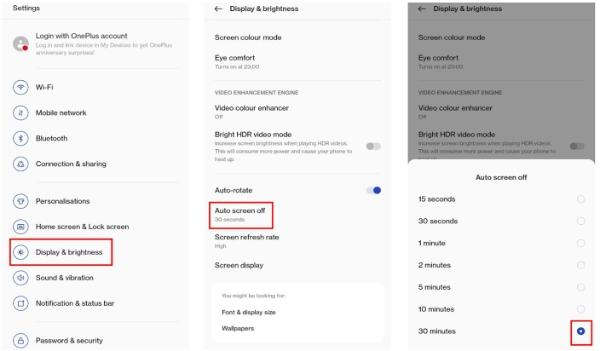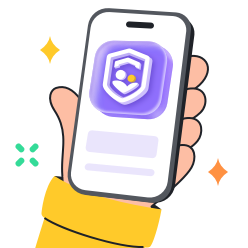How do I lock my screen? It is a very basic question with paramount significance for safeguarding your technological existence.
Whether you are using a smartphone, iPad, laptop, or personal computer, the first step to protecting your assets online begins with a screen lock.
This complete tutorial will guide you when it comes to locking the screen on different devices to safeguard your data.
Why locking your screen is important
Screen locking is one of the most basic yet effective measures for protecting your digital life.
When the device is unlocked, it is an open invitation for anyone to access your information with the potential of compromising it significantly.
Here’s why you should always lock your screen:
1. Protection of personal data: Your device may contain personal data like emails, phone numbers, photos, payroll information, and passwords. Locking your screen preserves this information and protects it from unwanted access by others.
2. Prevention of identity theft: Your identity could be compromised if the gadget falls into the wrong hands. By locking your screen, you ensure that other people cannot easily obtain your details and impersonate you for unlawful practices.
3. Financial security: When using your device for bank operations or purchasing something online, locking the screen is critical to prevent leakage of your sensitive financial data.
4. Data privacy: Browsing history, even on non-sensitive matters, may enlighten others about aspects of your life. To ensure your privacy, it is recommended that you lock your screen.
5. Preventing accidental actions: You can lock your screen so that you don’t do things such as sending messages or buying things accidentally.
6. Child safety: Helps prevent children from seeing materials they should not or changing settings on your device without your knowledge.
How do I lock my screen on different devices
iPhone/iPad
Here’s how to lock your screen on an iPhone or iPad:
1. Place your finger on the side button, which is sometimes referred to as the power button, and tap it once.
- For iPhone models without the home button, this button is located on the right side of the screen.
- On most older iPhones and most iPads, this button is located at the top right of the device.
- The screen will dim and lock after a short period of inactivity.
If you want your device to auto-lock after a certain period of inactivity:
– Open the settings application on your device.
– Scroll down and then tap the option labeled “Display & Brightness.”



– Tap on “Auto-Lock. “
– Select the amount of time you wish for your device to wait before it can lock on its own. The options are generally between 30 seconds and 5 minutes.
Android Devices
The steps for locking your Android screen may vary slightly depending on your Android device model and version, but here’s a general guide:
- Press the power button once:
- This button is usually placed on the right-hand side or at the top of the device.
- As soon as the corresponding key is pressed, the screen will turn off and lock.
To set up auto-lock after a period of inactivity:
– Go to the Settings app on your Android smartphone or tablet.
– Depending on your gadget’s options, scroll down to the “Display” or “Security” section.



– Find the option labeled as “Screen timeout,” “Auto screen off,” or “Sleep.”
– Tap on it and select the time you prefer your device to take before it locks itself. The choices are usually between 15 seconds and 30 minutes.
Windows PC
Here are multiple ways to lock your screen on a Windows PC:
1. Using the Windows key + L:
- Press the Windows key and then the L key at the same time.
- This is the fastest approach suitable for all the latest Windows operating systems.
2. Using the Start menu:
- Right-click on the Windows icon or Start button located on the bottom left of the home screen.
- Go to the Start menu and look for an icon in the form of your user profile; it usually is located at the top of the Start menu.
- In the dropdown menu, click on the “Lock” button.
3. Using Ctrl + Alt + Delete:
- On your keyboard, press the three keys together, which are Ctrl, Alt, and Delete.
- On the screen that pops up, locate the “Lock” button and click on it.
4. Using the Run command:
- To open the Run dialog, press the Windows key and R together.
- Now, write ‘rundll32.exe user32, dll, LockWorkStation’ and hit the Enter button.
To set up auto-lock after a period of inactivity:
(1). Press the Windows key + I to open Settings.



(2). Click on “Personalization”.
(3). Scroll down and click on the option that says “Lock screen.



(4). Next, look for the “Screen timeout settings” and click on it.



(5). At “On battery power, turn off my screen after” and “When plugged in, turn off my screen after,” choose your desired time.
Mac
Here are several methods to lock your screen on a Mac:
- Using the keyboard shortcut:
- To quit the app, press two keys at once: Command + Control Q.



- That will cause your screen to lock right away.
2. Using the Apple menu:
- Go to the top-left corner of your screen and right-click on the Apple logo.



- From the appearing menu, choose the Lock Screen option.
3. Using Hot Corners:
- Open System Preferences on the toolbar, then choose Desktop & Screen Saver and go to the Screen Saver tab.
- In the bottom right corner, click on the icon “Hot Corners.”
- Select a corner on the device, click the drop-down menu, and select “Put Display to Sleep” or “Start Screen Saver.”



- Now, if you move your cursor immediately to that corner, it will lock your screen.
4. Using the Touch ID button (if your Mac has one)
- Lock the iPhone’s screen by placing your finger on the Touch ID button and holding it down for a few seconds.
- Your screen will lock.
Additional tips for enhancing mobile device security
Although locking your screen is one of the most important ways of Protecting your phone, there are still many other steps that can strongly increase the safety of your gadget.
Here are some extra tips to help ensure your mobile device is secure:
Password and authentication best practices
– Create strong, unique passwords:
We can mix upper- and lowercase numbers and special characters. Do not use birthday details as passwords because these are easy to guess.
– Enable two-factor authentication (2FA):
This gives additional protection in that a second factor to the user’s identity is asked, say, a code that has been sent to your telephone number or email.
– Use biometric authentication:
Think about touch ID or face ID for easy access to the device and, at the same time, make it secure.
App and software management
– Be cautious about app permissions:
Each app requires specific permissions before it is installed. If these permissions are not required, the contacts, location, and camera options should not be easily accessible.
– Keep software updated:
This helps in patching some of the weaknesses that could be exploited by the wrong people; install them from time to time.
– Avoid public Wi-Fi for sensitive tasks:
Wi-Fi connection available for everyone is usually referred to as public and is normally open. It is advisable not to log into sensitive accounts or perform any financial operations using them.
Device management and protection
- Regularly back up your data: It is also advisable to back up your data to avoid losing your precious data in case of any damage to the device.
- Use a reliable antivirus app: Free your computer or laptop from viruses, worms, trojan horses, and other malicious programs through a reliable antivirus program.
- Be wary of phishing attempts: It is always important to be wary of any e-mail, message on the mobile phone, or call requesting personal information.
- Secure your device physically: To reduce the device’s physical impact, you can use a case or a screen protector. It is also advisable to have a tracking app in case you lose your device, or it gets stolen.
How can parents monitor their kids’ mobile activities when the screen locks?
Parents today face a delicate balance: between protecting children from the content they are able to access on the internet without infringing on their right to privacy.
Off-label ways of supervising the activities done on electronic devices, such as checking the phone without the owner’s permission, are likely to cause tension and disrespect.
Thus, it is important to consider parental control tools such as FlashGet Kids that can fill in this gap.
FlashGet Kids:
FlashGet Kids provides direct ways for parents to monitor their kids closely. Its primary function, usage reports, gives the parents an idea of how their child spends their time online.
Beyond this, the app offers a suite of tools to help parents stay informed and in control:



– App tracking: Parents are able to view the applications their kids are running, as well as the usage frequencies and duration.
– Content filtering: This feature enables parents to prohibit access to obscene content and websites, thus protecting their children.
– Screen time management: Teach children how to have balanced schedules by limiting the time they spend in front of screens each day.
– Location tracking offers you the opportunity to know the exact position of the child, which can ease your mind.
With these features parents can easily monitor what is appropriate for the child or not, and at the same time, create trust and build honest relationships with the kid.
Conclusion
With so many things going on in your environment and so many risks lurking in the digital world, locking your screen is your best protection.
In following the above sequence that is outlined in this guide, you are now in a better position to protect your own data and keep the devices in your own control.
Do not forget that the locked screen could be the only line between keeping your digital life safe and having your identity stolen. Thus, lock it up and free your mind from worry.

